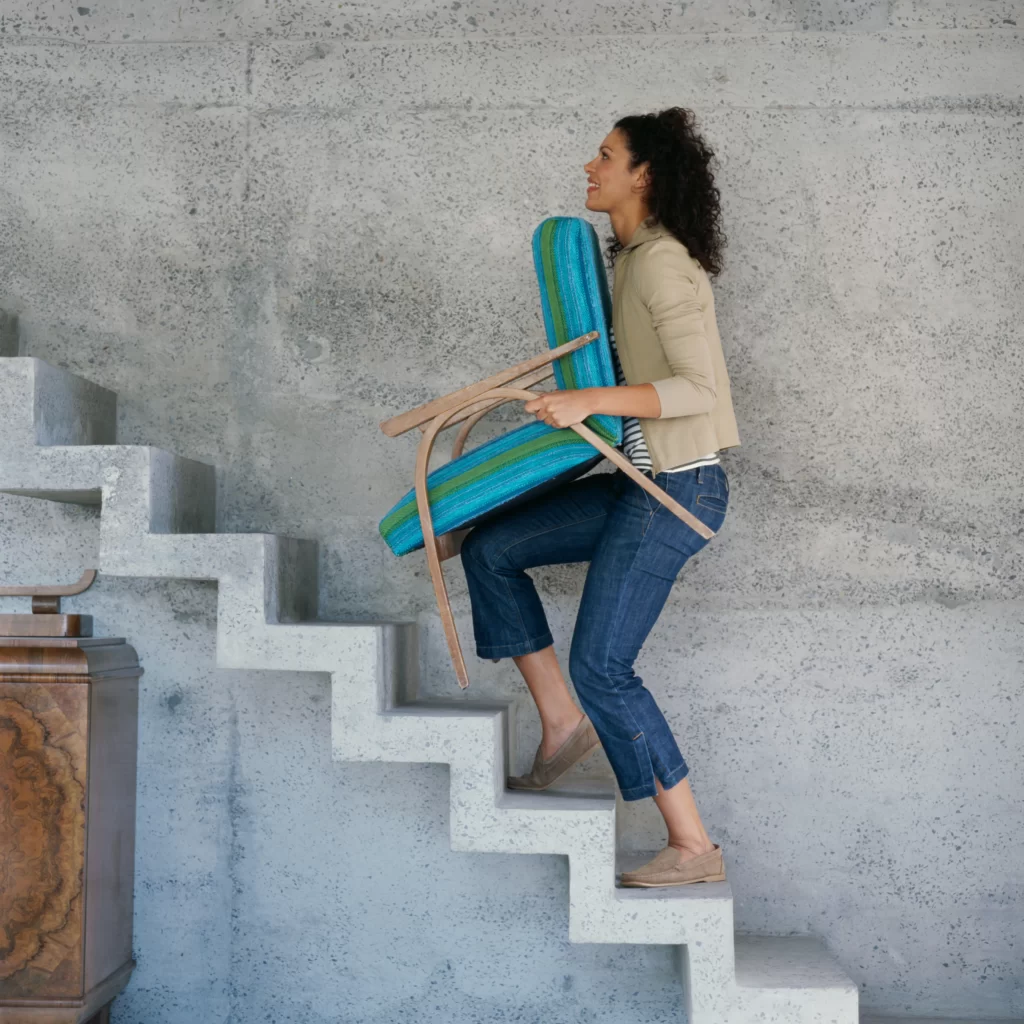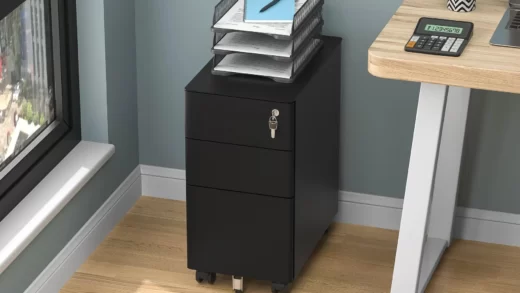It can be challenging to move large pieces of furniture with family and friends. But doing it all by yourself? That’s next-level!
Of course, it can be done; you just need to be knowledgeable in order to execute it safely.
This detailed guide on how to move heavy furniture by yourself was written because we realize it can be difficult. On how to set up your environment and safely lift large pieces of furniture, as well as other advice, is provided. Just remember that even though we are confident that you are strong and capable of moving everything by yourself, we do advise enlisting the aid of a friend for specific moving tasks, such as those that require climbing stairs or heavy lifting.
Table of Contents
How To Move Heavy Furniture By Yourself?
1. Remove Any Obstacles
Getting rid of anything that might cause you to trip or fall is perhaps one of the most crucial pieces of advice in our guide on how to move heavy furniture by yourself. That entails leaving nothing on the ground or walkways, including shoes, toys, bubble wrap, or cardboard boxes. In the same vein, make sure your children aren’t running around and confine your pets to a specific area.
2. Dress The Part
Take a close look at your wardrobe next when determining how to transport heavy furniture safely. In the beginning, if you don’t have the right shoes on, moving heavy objects will be difficult for you. High heels and flip-flops are absolutely forbidden. In case you drop something on your foot, wear closed-toed shoes!) with a non-slip grip at the bottom. Wear light, loose, and breathable tops and bottoms; if they are too tight, the fabric could split.
3. Protect Your Furniture And The Premises
Be prepared for some bumps along the way if you’re moving heavy objects. Wrap your items in bubble wrap or plastic to protect them (and your space). Upholstered furniture being moved? See if there are any plastic covers for chairs and sofas. You can always cover your furniture with old blankets or sheets if you’re in a bind.
Place furniture pads on the bottom of your furniture to prevent it from scraping the floor, and tape cardboard to the walls (especially the corners) to prevent scratches and dents. These precautions will protect your floors and walls.
4. Get Equipped
Avoid using force when moving large pieces of furniture. Pick up these tools before the big day to move heavy furniture safely and prevent harm to your arms, back, and legs.
- Dollies: These offer a simple method for moving large pieces of furniture without exerting too much effort. Take a hand truck with two wheels or a square platform with four wheels. Put your items on the platform of the dolly, then move it with the handle in the desired direction. Your ability to transport your possessions from Point A to Point B will be significantly improved if they are on wheels.
- Moving straps: Turn to move straps, also known as lifting straps, if you’re unsure how to move something heavy. These can aid in weight distribution, easing the strain on your legs and back.
- Work gloves: Gloves offer protection for both you and your furniture. If your furniture has any jagged or sharp edges, these gloves will aid in preventing injuries. They can also prevent you from contaminating your possessions with oil or dirt from your hands.
- Sliders: Are you dragging large pieces of furniture across hardwood or tile floors? In that case, add sliders to the bottom of your furniture. This makes it much simpler to slide and glide your objects across the floor while also protecting your floors from scrapes and dings. For moving your possessions across the carpet, you can also find carpet sliders.
- Ramps: Forget about using your strength to lift heavy furniture upstairs and into truck beds or moving trucks. Placing a heavy or awkward item on a raised surface is made much simpler and safer by ramps.
6. Look Into Moving Techniques
Though you probably already know that you should always lift with your legs, there are other moving techniques you should be aware of. When lifting or carrying furniture, keep your body straight and avoid bending your knees. To aid in maintaining your balance, you should keep the item as close to your body as you can. Ensure that you can see clearly in front of you first and foremost.
7. Lighten The Load
This is not a competition of strength! Take off the removable components to make your items lighter. Remove all of the shelves from a desk or dresser before moving them. Get the wooden legs off the couch. Prior to picking them up, make a list of all your heavy items and consider how you can reduce their weight.

8. Follow The Buddy System
Don’t be reluctant to ask for assistance if you’re having trouble figuring out how to move furniture on your own. Because the injury is a possibility when moving heavy objects alone. Find some friends or neighbors who might be willing to lend a hand. Plan to move the particularly heavy items together and set them aside.
What Should You Avoid Lifting Alone?
No matter how strong your back is, there are some things you should never lift yourself. Finding expert assistance is the only safe way to move some objects because they are so large or heavy. Other items might be bulky and delicate, necessitating special handling, attention, and a few specialized moving tools. For the following things, we advise using a moving company:
- Pool table
- Piano
- Fish tank
- Hot tub
- Large/heavy antiques
- Exercise equipment
- Washing machines and other appliances
It takes patience and planning to make a move successfully. You should prepare for the move as much as possible in advance. So that you don’t get hurt, lift boxes and furniture correctly and carefully, taking as much time as necessary. When possible, make use of moving tools to help you get through without needing to visit a chiropractor later.



